Guacamole's cousin from the south, try this creamy, tart, and herby avocado salsa from Venezuela. Guasacaca con aguacate is the perfect condiment for arepas, empanadas, tequeños, tacos, and more. Try this staple of Venezuelan cuisine, a delicious sauce full of bright, fresh flavors!
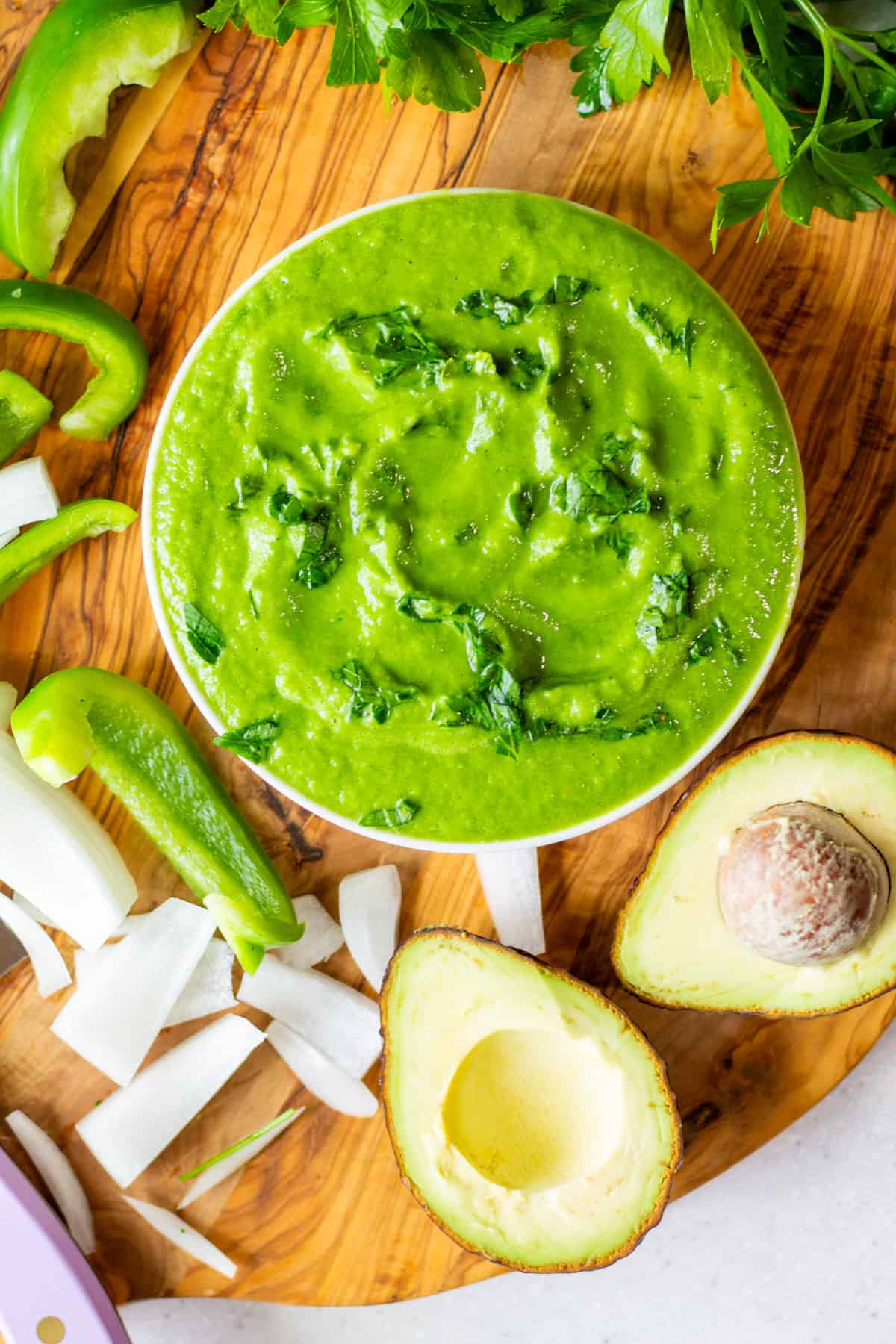
Want to save this post?
Enter your email below and get it sent straight to your inbox. Plus, I'll send you quick & simple plant-based recipes every week!
A whole food plant-based oil-free salsa, which some might compare to Mexican guacamole or salsa verde. It has its own unique flavor profile, South American cultural traditions, and Venezuelan history. You should give it a try!
If you're looking for guasacaca sin aguacate, see my Venezuelan cilantro green sauce recipe.
Jump to:
🥑 Guasacaca vs guacamole
What is the difference between guacamole and guasacaca?
Guasacaca
Guasacaca is a traditional Venezuelan sauce made with cilantro, parsley, onion, garlic, vinegar, salt, black pepper, oil, and sometimes avocado.
The primary flavors are: fresh herbs, tart, sharp, sour and creamy.
It is often blended to a smooth, somewhat thin consistency.
It is served as a condiment with arepas, tequeños, empanadas and grilled meats.
Guacamole
Guacamole is a traditional Mexican sauce made with avocado, lime juice, jalapeño pepper, cilantro, onion, salt, and black pepper. The ingredients are chopped by hand and mashed together with the avocado.
The primary flavors are: creamy, spicy and sour.
It is often made into a chunky, thick consistency with some texture.
It is served as a condiment with tacos, nachos, burritos, taquitos, and tostadas or as a dip for tortilla chips.
🧄 Ingredient notes
To make this creamy avocado salsa recipe, you'll need the following ingredients.
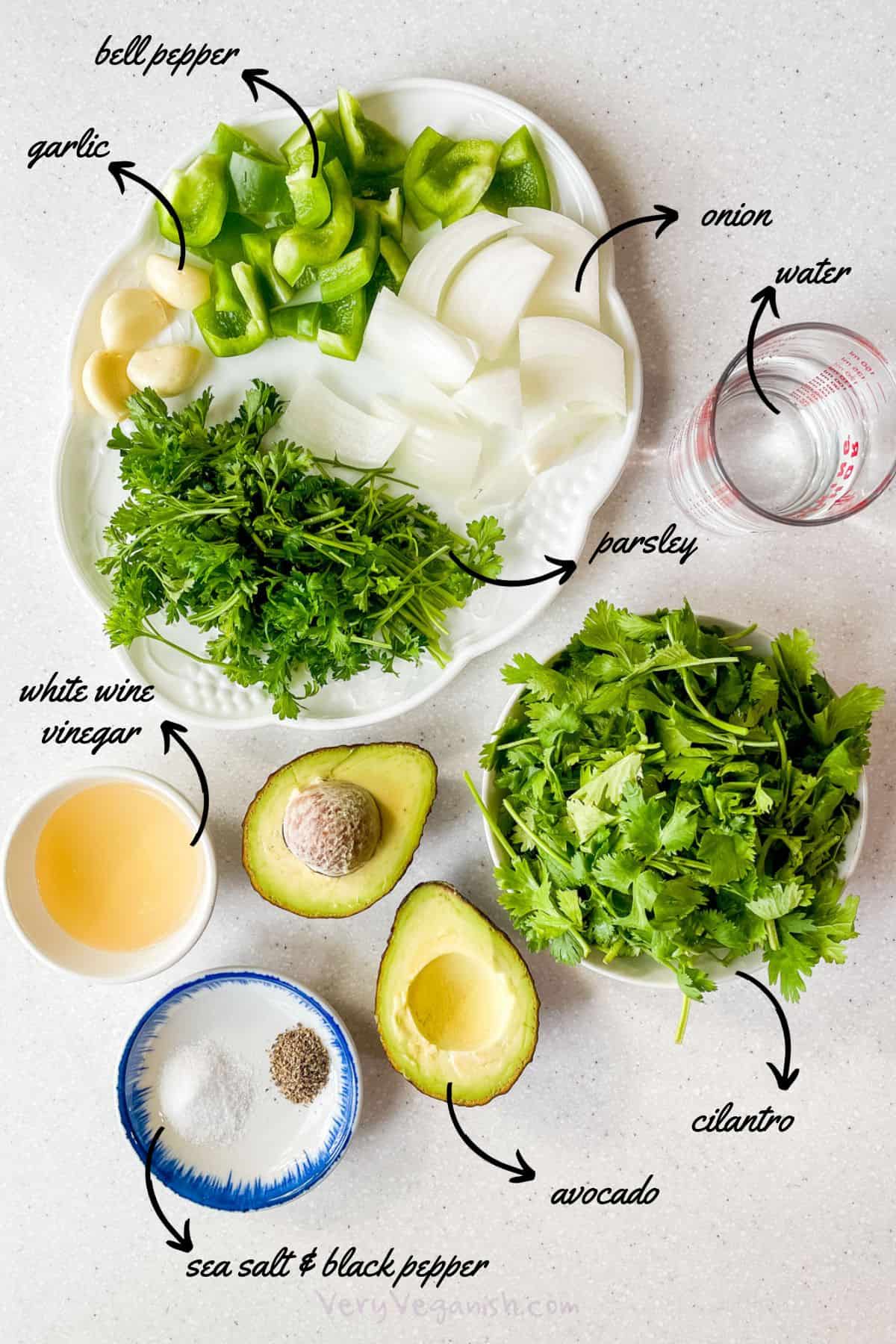
- Avocado - Ripe avocado transforms thin and pungent guasacaca sauce into a rich, thick, creamy salsa with more mildness.
- Fresh cilantro - Lots of cilantro (coriander) is the primary flavor in this sauce. Use fresh cilantro that has been washed and any yellow or brown leaves removed. You can use the stems of the cilantro in this, so no need to tediously pluck those.
- Fresh parsley - Parsley adds more fresh flavor to this sauce. A much smaller amount of parsley is used. Be sure the parsley is washed and any yellow or brown leaves are discarded. You can use either curly or Italian leaf parsley.
- Fresh white onion - Raw white onion adds sharpness to this sauce.
- Fresh garlic - Raw fresh garlic cloves add sharpness and flavor to this sauce.
- Bell pepper - Green pepper will help preserve the bright green color of this sauce. Using a sweeter yellow, orange, or red bell pepper will make the sauce a little sweeter and reduce any bitterness that the green peppers naturally have.
- White wine vinegar - Adds brightness and acidity to the sauce. Lemon juice is an excellent substitution.
📋 Substitutions and variations
Here are some suitable substitutions for the ingredients in this Venezuelan guasacaca recipe:
- Avocado - Instead of avocado, try using vegan mayo, cashew cream, or vegan sour cream (soaked cashews would also work if you have a high-speed blender) for the creamy thickness avocados would normally give this sauce. You can also use steamed green peas, steamed edamame, or olive oil.
- Fresh parsley - instead of fresh parsley, you could use dried or frozen parsley, since it is a minor player in the sauce. But, fresh cilantro is non-negotiable.
- Fresh garlic - fresh garlic cloves is best here, but you could get away with using alternatives, such as jarred minced garlic or granulated garlic powder, if you're in a bind.
- Green bell pepper - green bell pepper has more bitterness than red, orange and yellow bell pepper, but will preserve the color of the sauce. You can use any color bell pepper you like, just know that if you want bright green sauce, it would be best to stick with green or yellow peppers. I have also used jarred roasted bell peppers, which are delicious in this sauce. If you want your guasacaca to be spicy, you could substitute the green bell pepper for spicy chiles, such as jalapeño, serrano, or habanero.
- White wine vinegar- substitute with lemon juice (will help prevent the avocado from browning quickly). If neither are available, use apple cider vinegar, red wine vinegar, lime juice, sour orange juice, rice vinegar or white vinegar.
- SOS-free - make this SOS-free by omitting the salt
Switch things up with these variation ideas!
- Spicy Guasacaca - To make this salsa spicy, add one jalapeño or serrano pepper (with seeds will make it spicier. Without seeds will make it milder). You could also add some hot sauce of your choice, like Cholula, Valentina or Tabasco!
- Guasacaca sin Aguacate - Omit the avocado and add a little oil or other thickening agent and you have guasacaca sin aguacate, a thin, pourable, bright, sharp, fresh herb sauce that is used as a condiment throughout Venezuela.
- Guacamole - Make Mexican guacamole instead with lots of lime juice, salt, black pepper, cilantro, jalapeño and a little purple onion
- Reduce food waste - use leftover herb stems! - Wondering what to do with leftover cilantro stems? Parsley stems? Use them to make this herb sauce! For a milder sauce, use only cilantro and parsley stems and whatever cilantro and parsley leaves you have. This is a great way to reduce food waste and use up those herb stems!
🔪 Instructions
Making this avocado cilantro salsa is very simple and a similar process to making guacamole.
For a smooth, bright green sauce: use a blender
For a textured, chunkier sauce: use a food processor or chop by hand
We enjoy both versions!
Here are step-by-step instructions for how to make guasacaca con aguacate Venezolana in a blender.
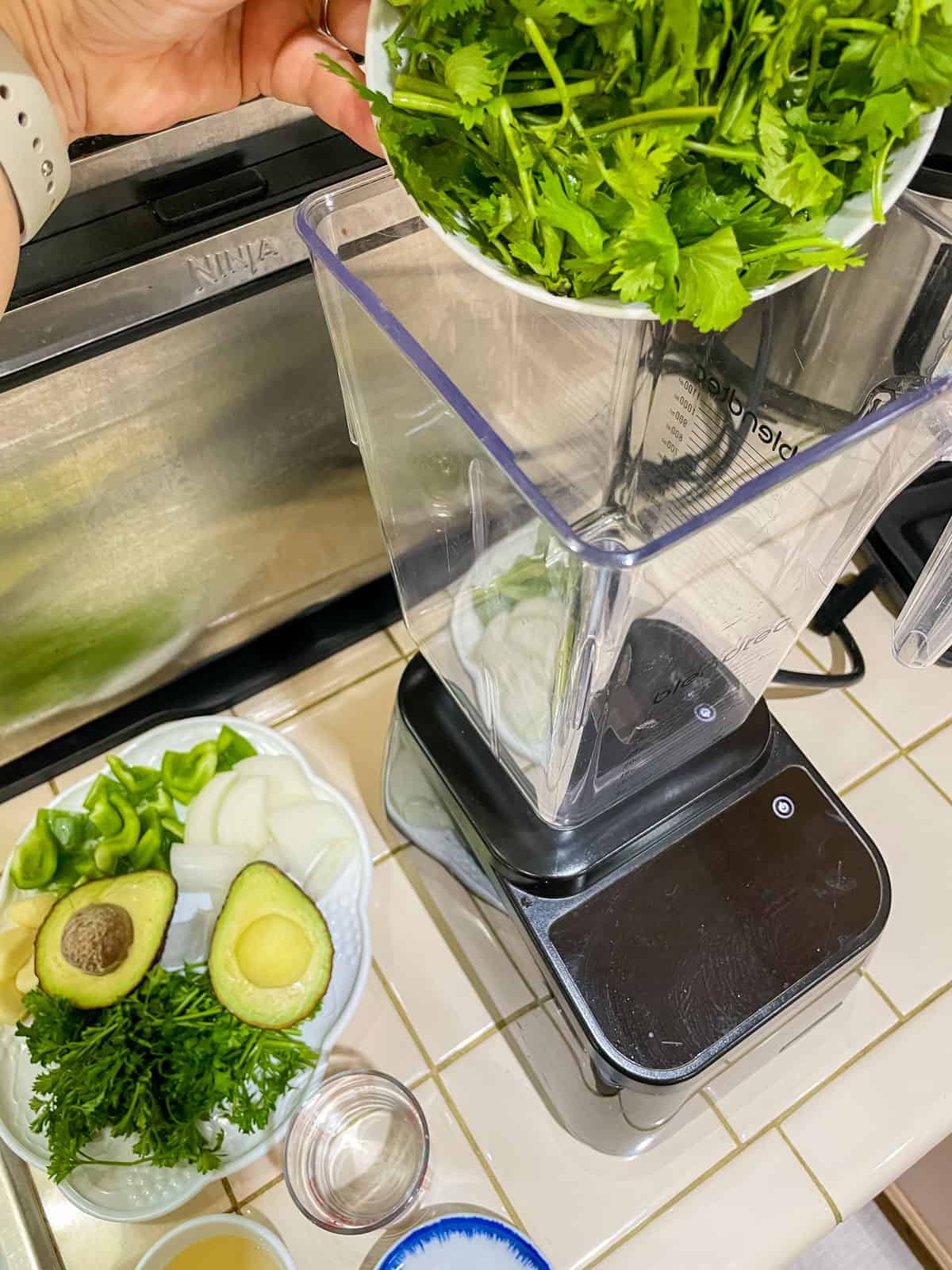
Step 1 - Gather all ingredients and add to blender or food processor.
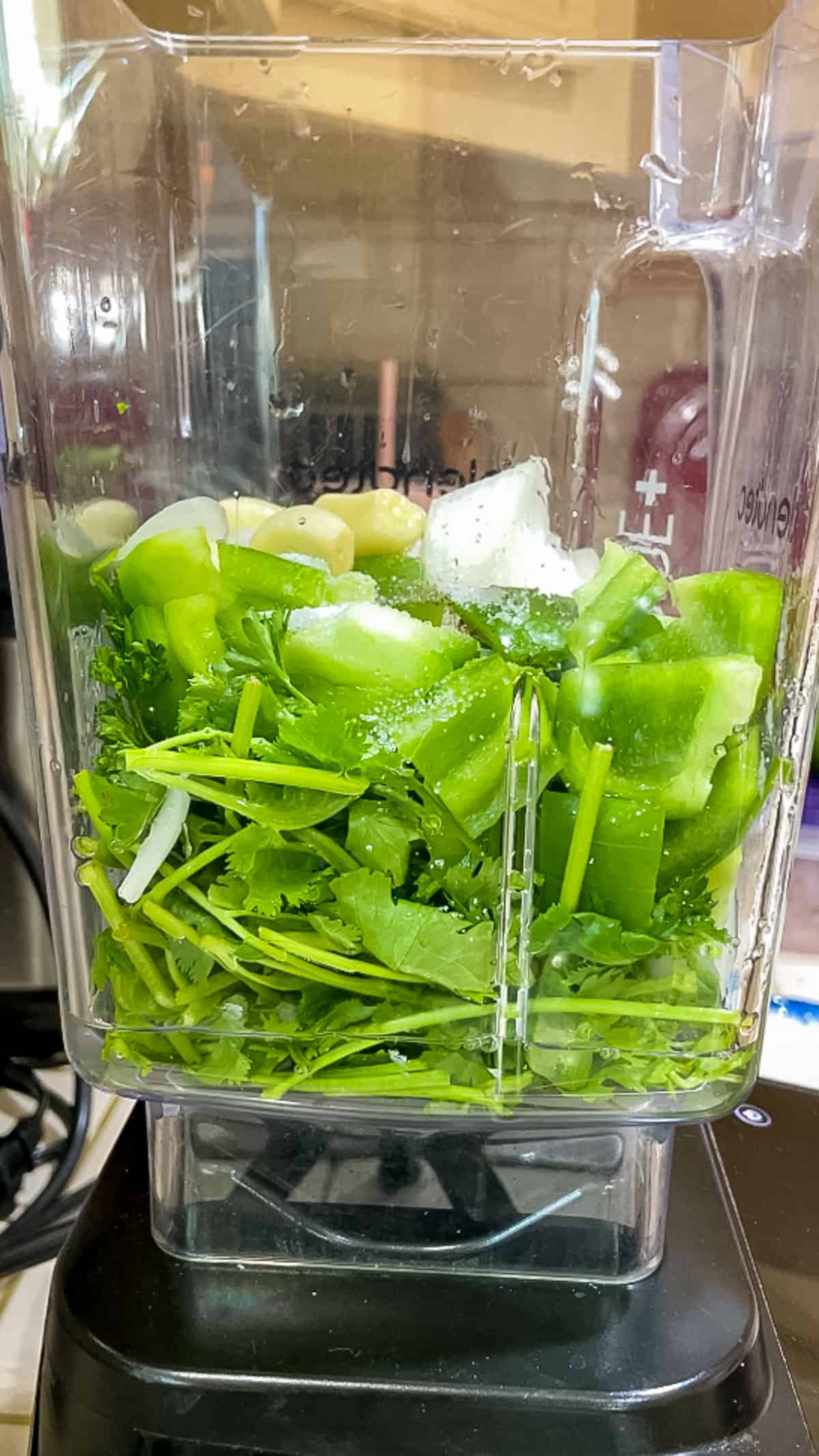
Step 2 - add all ingredients to a blender
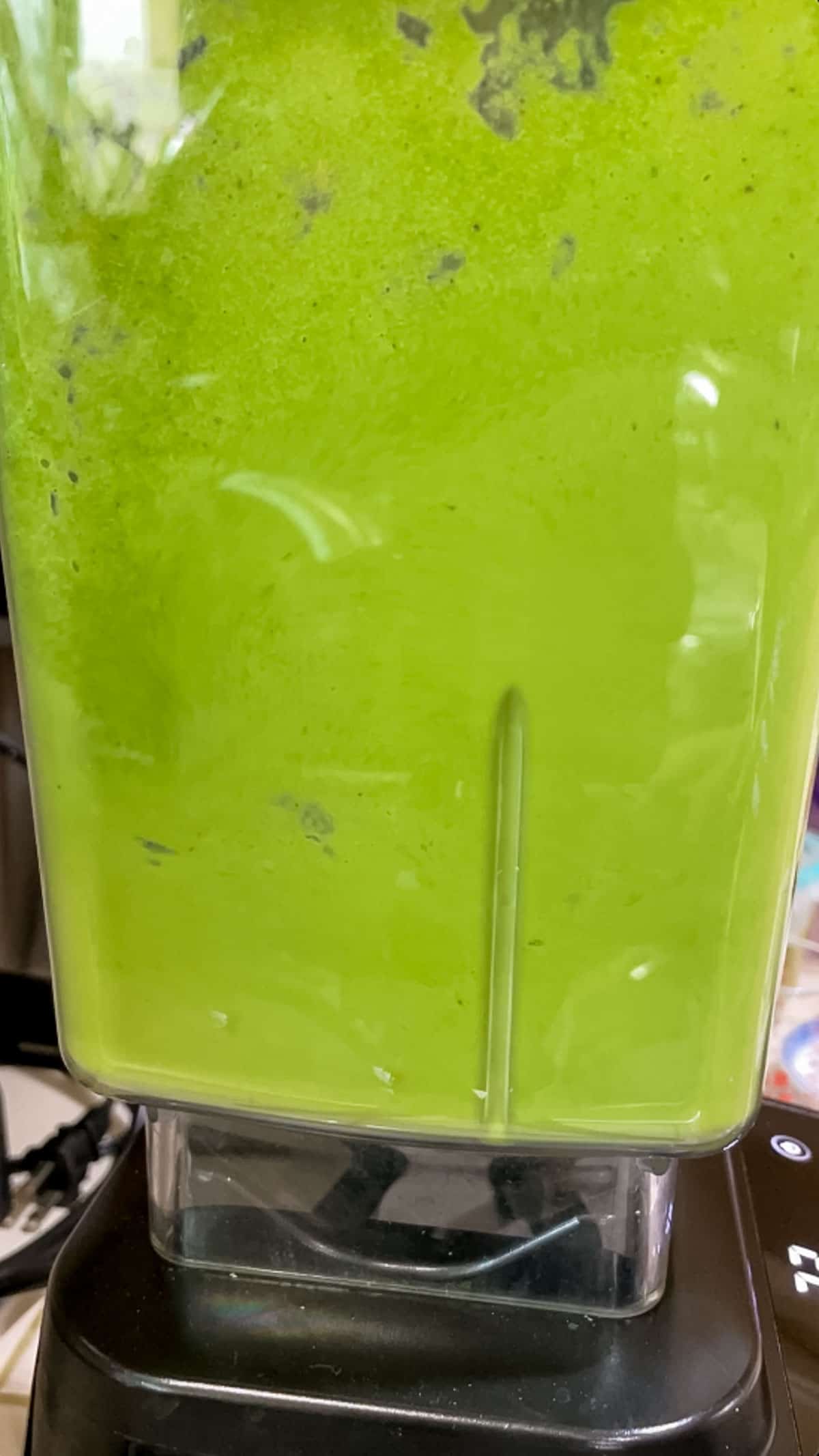
Step 3 - Put lid securely on the blender and blend until you have a smooth green salsa. The salsa should be bright green and have a smooth texture when it's completely blended.

Step 4 - Taste the salsa and add more salt, if needed. If it is too thick, add water until you reach the desired consistency.
🧯 Food safety
- Wash hands with soap and water before cooking
- Don't leave food sitting out at room temperature for extended periods
- Never leave cooking food unattended
- Be careful to avoid touching the blades of a blender or food processor, as they are very sharp and can cut you.
See more guidelines at USDA.gov.
⭐️ Expert tips
- The color of the bell pepper you use will affect the color of the finished sauce
- Use fresh herbs and ripe avocado for the brightest flavor in guasacaca recipes
🍳 Equipment
- High-speed blender or food processor
🥡 Make ahead and storage tips
This guasacaca can be made ahead of time, but for the brightest color and best flavor, make it and serve it fresh. Good for 2-3 days, if stored in the refrigerator.
This sauce turns brown when stored in the refrigerator or freezer, so I wouldn't recommend freezing it or storing it for longer than 3 days. It does not have a long shelf life.
👨👩👦👦 Serving suggestions
Arepa sauce
The #1 reason to make this Venezuelan creamy avocado cilantro salsa is to drizzle it over your arepas, which are common throughout Venezuela and Colombia.
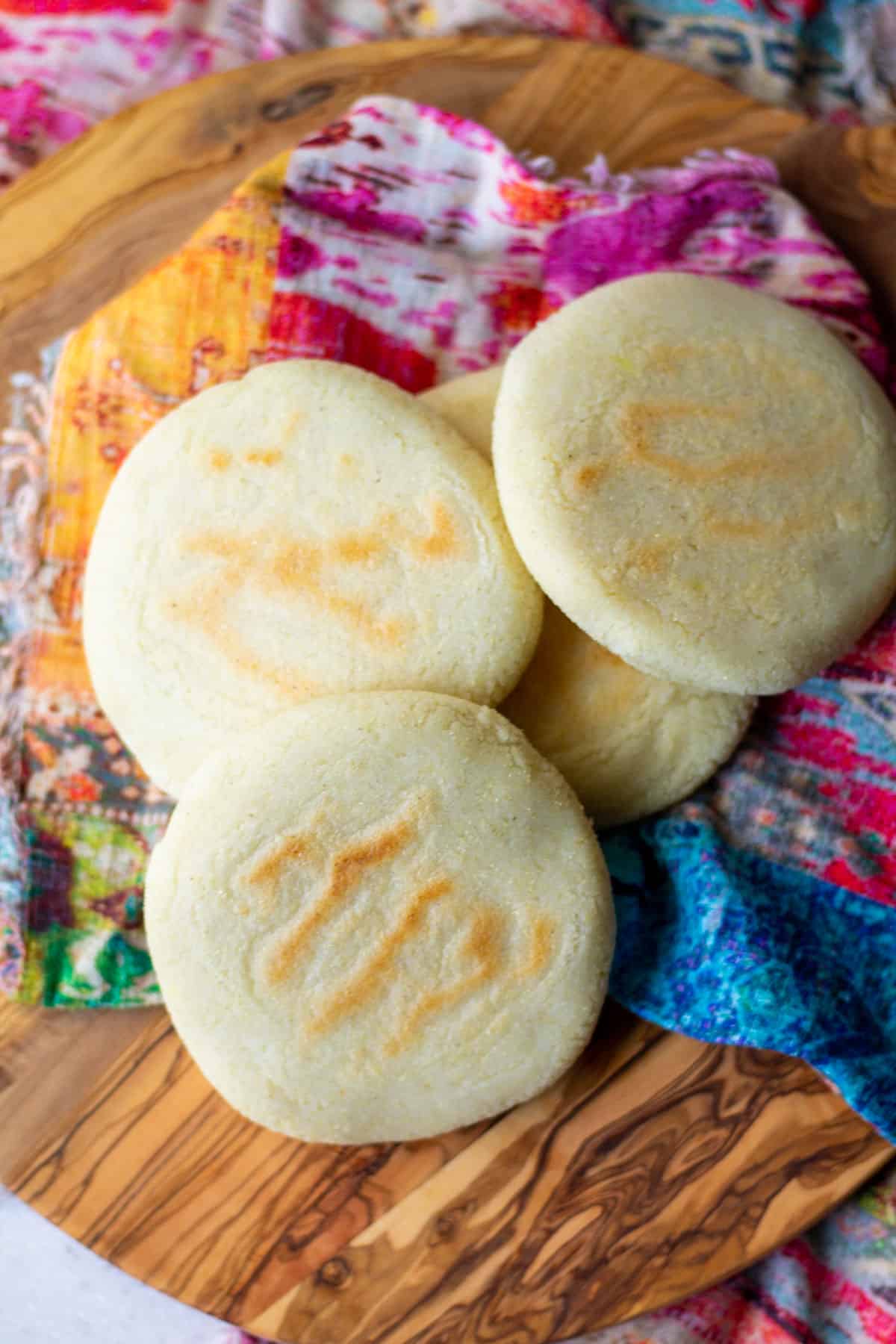
Drizzle over falafel or pita pockets
The flavors in this sauce go really well with Mediterranean and Middle Eastern food, as well as Latin American, South American, Mexican, or TexMex meals.
So, use it on falafel, pita pockets, grain bowls, schawarma, kebabs, salad.
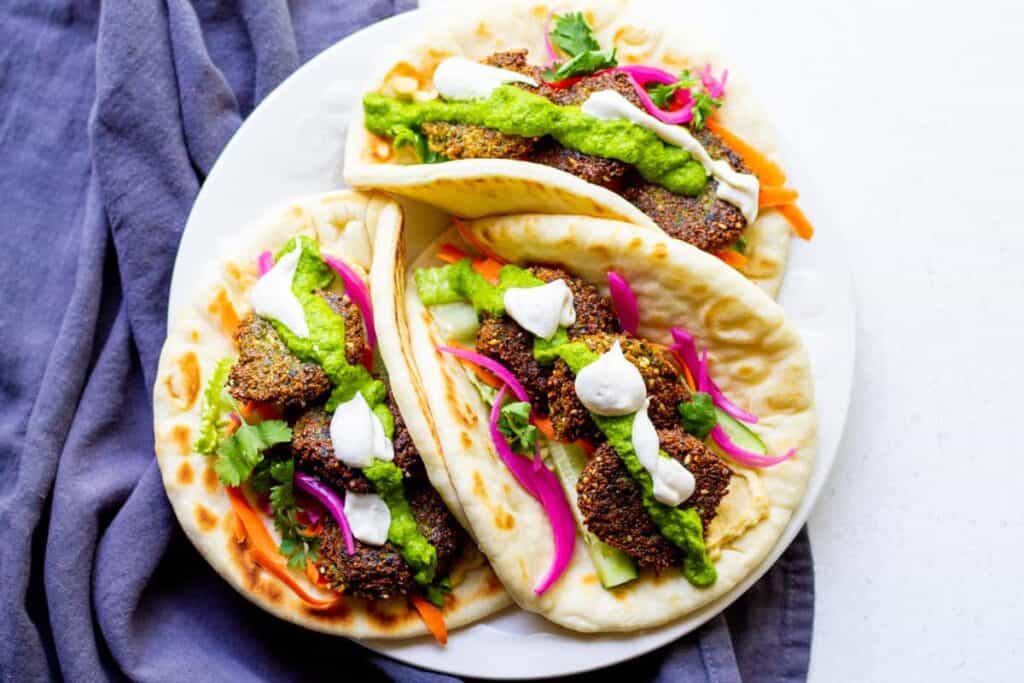
Use as a dip
Use this guasacaca con aguacate as a dip!
Dip your tortilla chips, corn chips, raw vegetables, pita bread in this creamy avocado salsa.
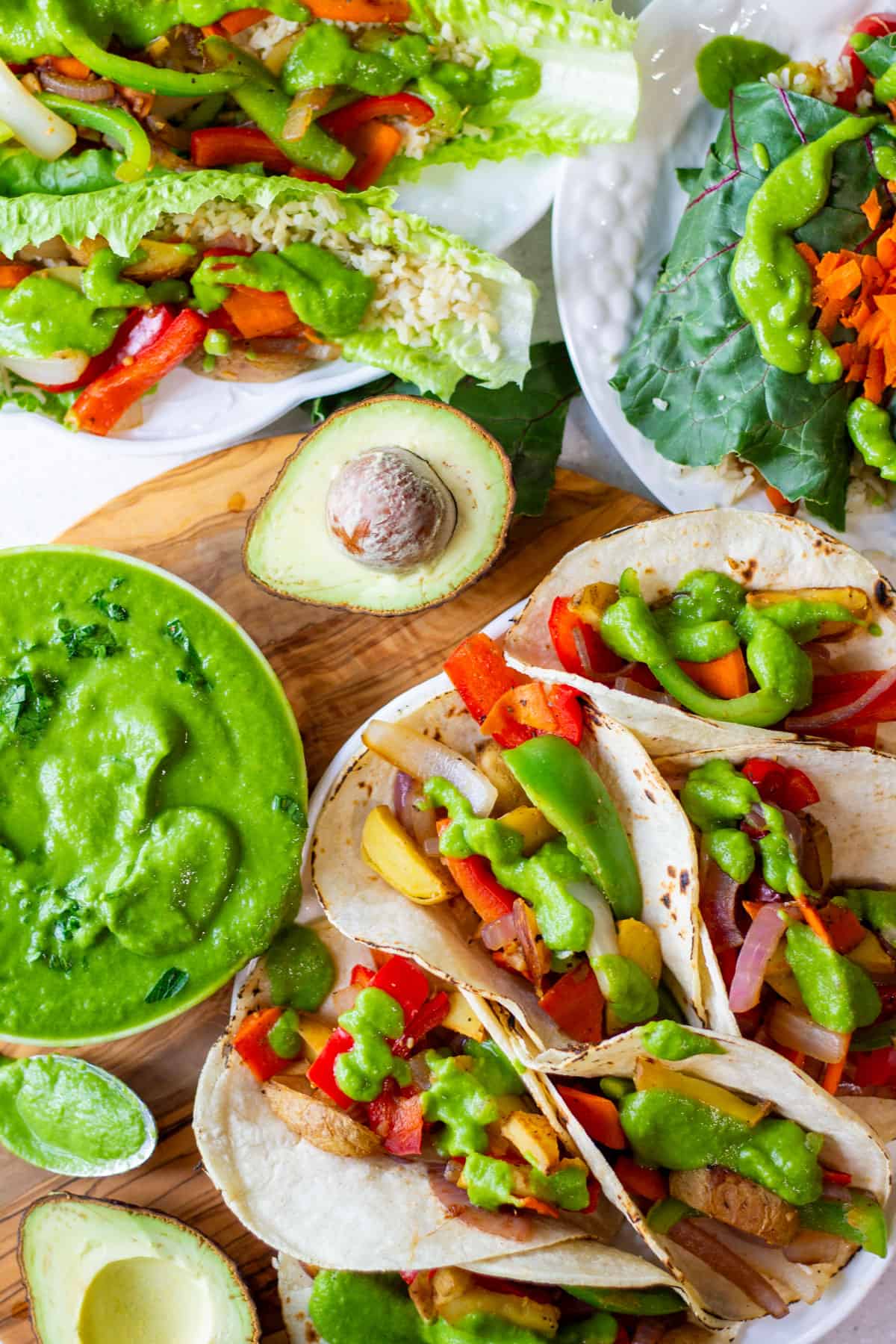
🚦 Calorie density score
🟡 This recipe gets a yellow light on the calorie density chart. Some of the ingredients (the avocado) are higher than 600 calories per pound, so eating richer meals like this regularly may prevent you from losing body fat or may even cause you to gain weight. Learn more about calorie density from Jeff Novick, MS, RDN.
Get your own printable calorie density chart for your refrigerator and free ebook explaining calorie density in simple terms.
🗺 Cultural influences
Our Venezuelan friend Alfonso and his mother Masu taught us to make Guasacaca Criolla sin Aguacate.
The version with avocado would be called "Guasacaca Criolla con Aguacate".
We learned to make this sauce in order to have a sauce/condiment for the arepas he taught us to make. In Venezuela, it's served as a condiment to tequeños (breaded fried cheese sticks), meat, skirt steak, hot dogs, and french fries.
Venezuelans don't typically eat a lot of spicy things. So, you'll notice there are no spicy peppers like jalapeño or serrano chiles in this sauce. If you like spice, you could certainly add some!
In the Dominican Republic, they have a similar sauce without avocado called "wasakaka". Very similar name and similar ingredients but a different preparation.
This recipe is inspired by my mixed ethnic background and heritage as a native of Houston, Texas, and by the strong cultural influences of my friends from Venezuela. See About for more information on my cultural influences and how I attribute recipes.
💜 More recipes you'll love
If you love this Venezuelan avocado salsa recipe, then check out my other vegan, plant-based sauces and condiment recipes!
Love this recipe? Please rate it 5 stars ⭐️⭐️⭐️⭐️⭐️ below in the recipe card. And, if you make it, please tag me on Instagram or Facebook in your posted photos! I would love to see your creations. 😄
📖 Recipe
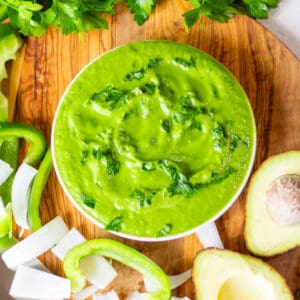
Venezuelan Creamy Avocado Cilantro Salsa (guasacaca con aguacate)
Equipment
- High speed blender for a smooth, blended bright green sauce
- Food processor for a sauce with texture
Ingredients
- 1 ½ cups cilantro 80g or 1 ½ packed cups fresh cilantro (leaves and stems, cut into 1 inch pieces)
- ¼ cup parsley 15g or ¼ packed cup fresh parsley (leaves and stems, cut into 1 inch pieces)
- ½ bell pepper 80g, remove seeds and veins, cut into large pieces
- ½ small onion 80g, peeled and cut into large pieces
- 4 cloves garlic 15g, cut in half
- 2 tablespoons white wine vinegar 30g or lemon juice
- ½ teaspoon sea salt
- ¼ teaspoon freshly ground black pepper
- 1 ripe avocado pitted and peeled
- ½ cup water 120g, (use only as much as is needed for the texture you want)
Instructions
BLENDER INSTRUCTIONS - For smooth sauce
- BLENDER: For a smooth sauce, use a blender. Add all ingredients (except the water) to the blender and blend until your sauce is smooth and bright green. If it is too thick, add a little water until you reach the consistency you want.1 ½ cups cilantro, ¼ cup parsley, ½ bell pepper, ½ small onion, 4 cloves garlic, 2 tablespoons white wine vinegar, ½ teaspoon sea salt, ¼ teaspoon freshly ground black pepper, ½ cup water, 1 ripe avocado
- Taste and adjust salt and pepper, if needed.
FOOD PROCESSOR INSTRUCTIONS - For chunky sauce
- FOOD PROCESSOR: For a chunkier sauce with more texture, use a food processor instead of a blender. (Or, chop all the ingredients by hand and mix into a bowl, mashing the avocado, like you would do when making guacamole.) Process all ingredients except the water and avocado until all the large pieces have been chopped down very fine and it looks like salsa.1 ½ cups cilantro, ¼ cup parsley, ½ bell pepper, ½ small onion, 4 cloves garlic, 2 tablespoons white wine vinegar, ½ teaspoon sea salt, ¼ teaspoon freshly ground black pepper, ½ cup water
- Add a pitted, peeled avocado to the food processor. Process into a thick sauce. If it is too thick, add a little water until you reach the consistency you want. You're looking for a thin guacamole texture.1 ripe avocado
- Taste and adjust salt and pepper, if needed.

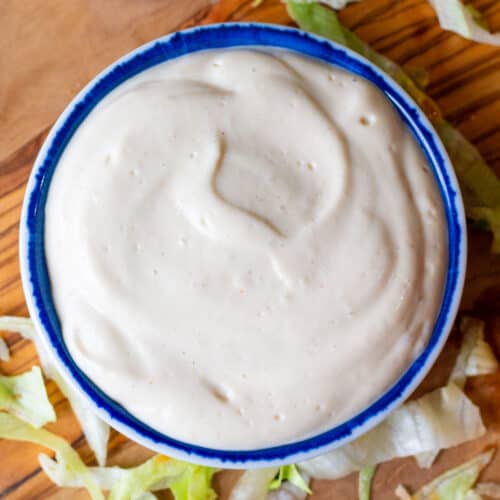
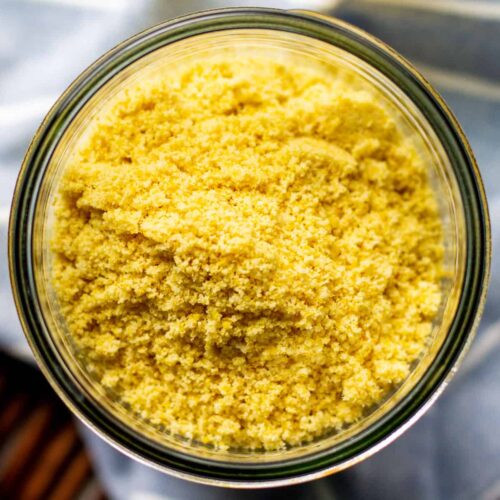
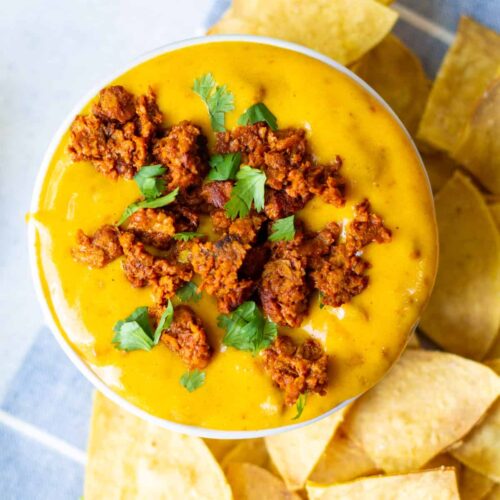

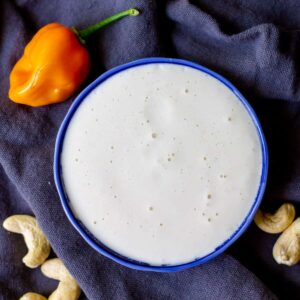
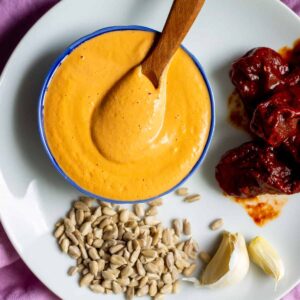
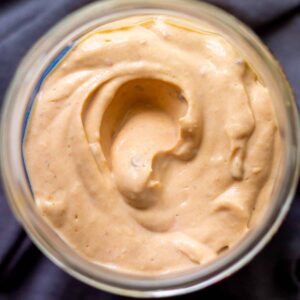
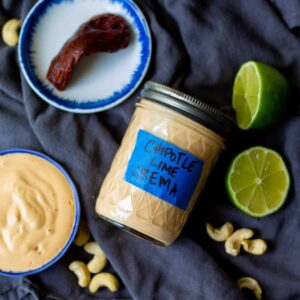
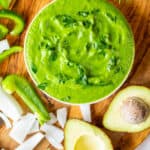
Comments
No Comments